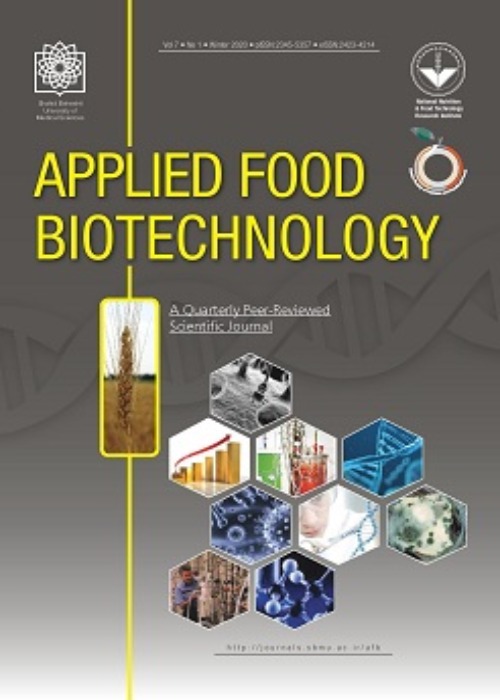Linking Food Industry to “Green Plastics” – Polyhydroxyalkanoate (PHA) Biopolyesters from Agro-industrial By-Products for Securing Food Safety
Author(s):
Article Type:
Editorial (دارای رتبه معتبر)
Abstract:
Aims and Scope
(i) Why do we feel that the issue is important and timely? Research in renewable biopolymers as substitutes for full-carbon-backbone plastics from fossil resources presents a topical R&D field worldwide. This is due to the ongoing depletion of fossil resources, the growing piles of plastic waste and plastic pollution of marine environments, and the need to convert waste streams of different industrial origin in a value-added way. PHA have the potential to replace established petro-plastics both in bulk applications as packaging material and in niche applications, such as the medical, electronical, etc. field. Moreover, the close relation of PHA production and application to the food sector becomes more and more evident. Not only does food production provide numerous (ago) industrial by-products which can, on the one hand, be applied to boost growth kinetics of PHA-accumulation strains, as evidenced in the case of nitrogenaceous whey retentate, silage residues, or shrimps waste, and, on the other hand, act as feedstocks for PHA-biosynthesis under nutritionally unbalanced growth conditions, as demonstrated for carbonaceous surplus materials like whey permeate, lignocellulosics, glycerol, waste lipids, etc. Moreover, PHA are currently investigated as future materials contributing to safe and smart food storage and packaging, as shown by PHA´s beneficial gas barrier properties. Grace to the high compatibility of PHA with numerous organic and inorganic additives, a range of promising PHA-based blend of composite materials are accessible to design novel food packaging materials. This encompasses the application of lignocellulosic filler materials from rice, sugar, or wood production, and even the development of more sophisticated formulations resorting to the incorporation of functional nanoparticles into PHA matrixes. (ii) What communities are expected to participate in the Special Issue? Scientific community; Scholars of higher level; Industrialists (iii) How are the background and expertise of the authors relevant to the proposed Special Issue? List of topics for the Special Issue.
(i) Why do we feel that the issue is important and timely? Research in renewable biopolymers as substitutes for full-carbon-backbone plastics from fossil resources presents a topical R&D field worldwide. This is due to the ongoing depletion of fossil resources, the growing piles of plastic waste and plastic pollution of marine environments, and the need to convert waste streams of different industrial origin in a value-added way. PHA have the potential to replace established petro-plastics both in bulk applications as packaging material and in niche applications, such as the medical, electronical, etc. field. Moreover, the close relation of PHA production and application to the food sector becomes more and more evident. Not only does food production provide numerous (ago) industrial by-products which can, on the one hand, be applied to boost growth kinetics of PHA-accumulation strains, as evidenced in the case of nitrogenaceous whey retentate, silage residues, or shrimps waste, and, on the other hand, act as feedstocks for PHA-biosynthesis under nutritionally unbalanced growth conditions, as demonstrated for carbonaceous surplus materials like whey permeate, lignocellulosics, glycerol, waste lipids, etc. Moreover, PHA are currently investigated as future materials contributing to safe and smart food storage and packaging, as shown by PHA´s beneficial gas barrier properties. Grace to the high compatibility of PHA with numerous organic and inorganic additives, a range of promising PHA-based blend of composite materials are accessible to design novel food packaging materials. This encompasses the application of lignocellulosic filler materials from rice, sugar, or wood production, and even the development of more sophisticated formulations resorting to the incorporation of functional nanoparticles into PHA matrixes. (ii) What communities are expected to participate in the Special Issue? Scientific community; Scholars of higher level; Industrialists (iii) How are the background and expertise of the authors relevant to the proposed Special Issue? List of topics for the Special Issue.
Keywords:
Language:
English
Published:
applied food biotechnology, Volume:6 Issue: 1, Winter 2019
Pages:
1 to 6
magiran.com/p1922741
دانلود و مطالعه متن این مقاله با یکی از روشهای زیر امکان پذیر است:
اشتراک شخصی
با عضویت و پرداخت آنلاین حق اشتراک یکساله به مبلغ 1,390,000ريال میتوانید 70 عنوان مطلب دانلود کنید!
اشتراک سازمانی
به کتابخانه دانشگاه یا محل کار خود پیشنهاد کنید تا اشتراک سازمانی این پایگاه را برای دسترسی نامحدود همه کاربران به متن مطالب تهیه نمایند!
توجه!
- حق عضویت دریافتی صرف حمایت از نشریات عضو و نگهداری، تکمیل و توسعه مگیران میشود.
- پرداخت حق اشتراک و دانلود مقالات اجازه بازنشر آن در سایر رسانههای چاپی و دیجیتال را به کاربر نمیدهد.
In order to view content subscription is required
Personal subscription
Subscribe magiran.com for 70 € euros via PayPal and download 70 articles during a year.
Organization subscription
Please contact us to subscribe your university or library for unlimited access!


